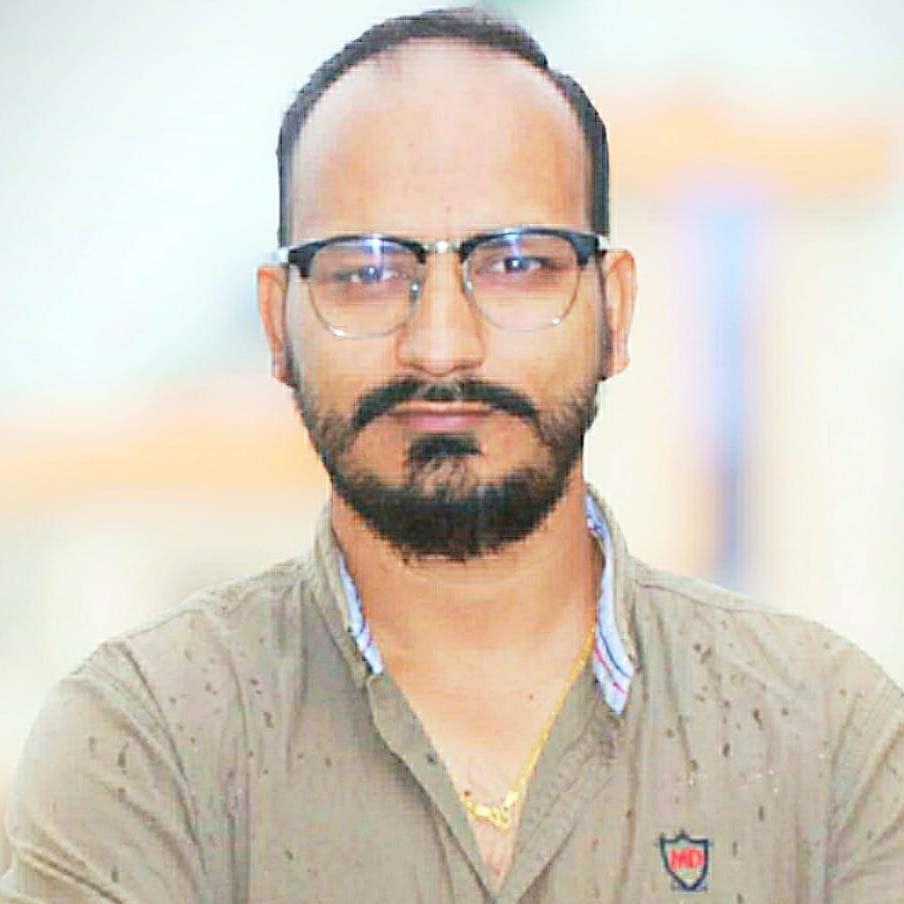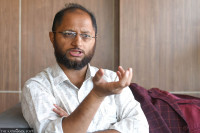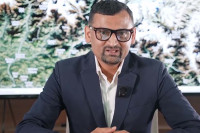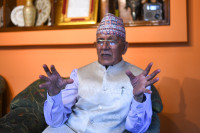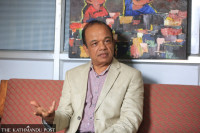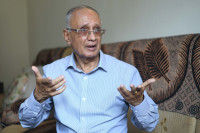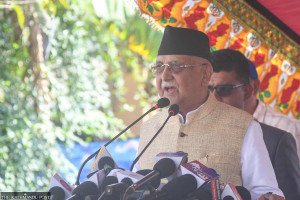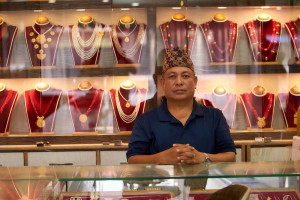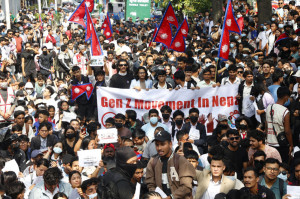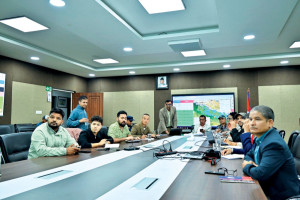Interviews
More investigation required to unearth Pokhara airport-related irregularities
The construction company had agreed to complete the project for Rs14 billion. So why was it given Rs22 billion?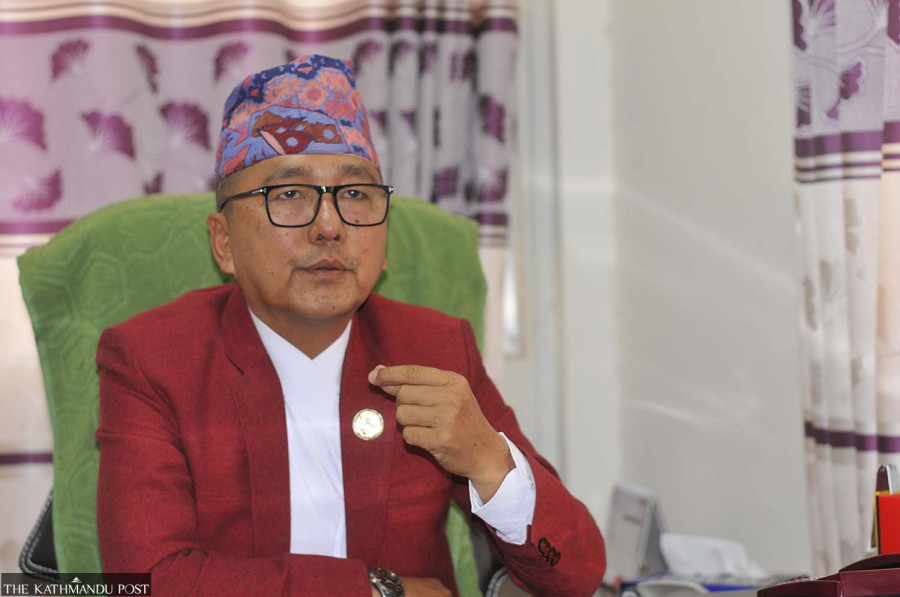
Purushottam Poudel
With public discontent growing over mismanagement of large-scale infrastructure and recurring corruption, Chairman of the Rastriya Prajatantra Party (RPP) Rajendra Lingden has emerged as one of the more vociferous critics of the current federal government. Known for his firm stand in favour of Hindu Kingdom and constitutional monarchy, Lingden is recently also in limelight as the head of the parliamentary committee probing alleged financial irregularities during the construction of the Pokhara Regional International Airport. In this interview with Post’s Purushottam Poudel, Lingden defends the committee’s findings and addresses accusations of politicisation.
What did you find during your investigation into the construction of the Pokhara Regional International Airport?
There has long been talk of corruption and irregularities in the Pokhara airport project. The airport has seen no commercial international flights in the past two years despite being inaugurated. This has led to persistent complaints and grievances. In this context, in June last year, the Public Accounts Committee of the House of Representatives formed a separate sub-committees to investigate the Pokhara and Bhairahawa airports and requested reports. As part of this, I led the subcommittee studying Pokhara airport.
Upon examination, we found financial irregularities during the airport’s construction. One might question whether the airport was built solely to make money for some people.
You suspect the airport might have been built for vested interests. Who were those involved in corruption, from the early stages to the project’s completion?
It’s difficult to pinpoint individuals with certainty. However, looking at the timeline, it appears that under the government of then CPN-UML leader Madhav Kumar Nepal—now Chair of CPN (Unified Socialist)—and then-Finance Minister Surendra Pandey, a committee was formed to initiate the airport’s construction. It appears the project was initiated with the use of $80 million saved from the Upper Trishuli Hydropower Project. Around that time, a decision was made to press ahead with the airport’s construction via a Chinese company under a turnkey model.
From the time of the Madhav Nepal-led government through to the subsequent administrations, various prime ministers, finance ministers, and ministers for tourism played active roles in advancing the project. It would be incorrect to say that building the airport itself was wrong. But, from the outset, the idea of awarding the contract exclusively to a Chinese company had been embedded in the process.
As for the project, there was no investigation into what happened to the initial $80 million. The airport was eventually built under an engineering procurement and construction (EPC) model with a loan from China’s EXIM Bank. Its estimated cost was evaluated at Rs 14 billion (approx. $145 million at the time), and a tender was issued under the EPC model where only Chinese companies were allowed to bid. Although the estimate was $145 million, the lowest bid came in at $305 million, more than double the amount. This itself indicated serious flaws in the process.
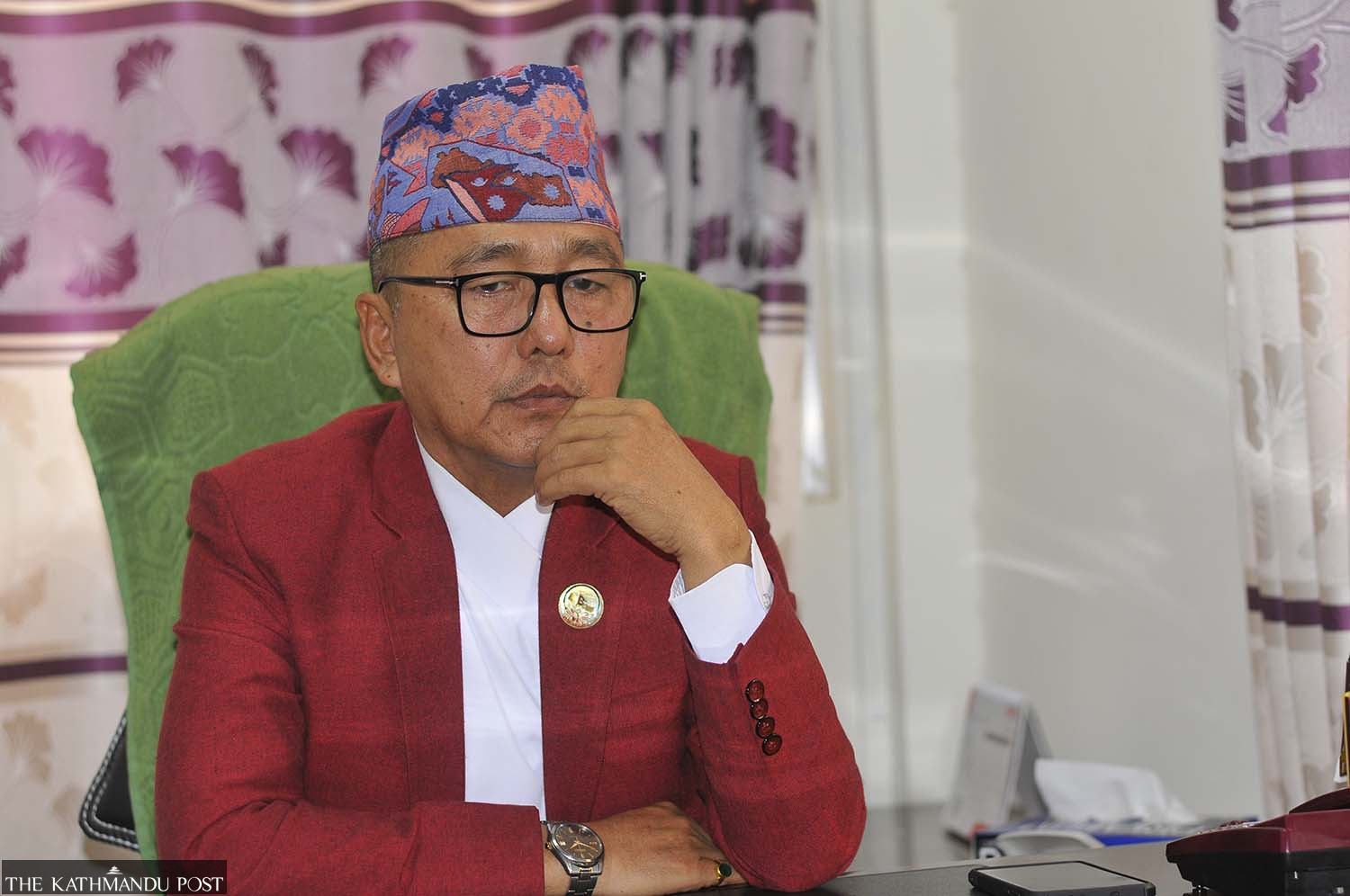
Instead of rejecting the excessive bid, the tender process was pushed forward under various pretexts. During negotiations, the construction company wrote to the Civil Aviation Authority of Nepal (Caan) expressing its readiness to work within the estimated cost. But some officials at the procurement level did not approve of this, so a consultant committee was formed to push the process. This committee facilitated negotiations even though no clause in the law supported such steps. The then-Council of Ministers decided it didn’t need to intervene and allowed the concerned authorities to proceed.
Though initially estimated at Rs 14 billion, the project was later reported to cost Rs32 billion, and then the final price was settled at Rs22 billion through negotiations. This shows apparent discrepancies right from the start.
So the irregularities during the airport construction process weren’t just on the Nepali side, but also on the Chinese side?
Our main objective was to assess whether there were irregularities. It is up to institutions such as the Commission for the Investigation of Abuse of Authority (CIAA) to reach definite conclusions. Our role has been to unearth the evidence of irregularities. Given the magnitude of the financial mismanagement, it is unlikely to have taken place without the awareness of both sides. However, even if the benefiting party (foreign contractor) facilitated irregularities, why should we solely blame them? Also, our focus is on our institutions and the individuals involved.
As media reports had already raised many of the concerns, what new or differing information did your investigation uncover?
Our study highlighted several aspects beyond what the media had reported. However, one must refer directly to the report to precisely identify these. Recently, there have even been attempts to discredit our report, with some claiming that, based on its contents, corruption was not possible. But it is clear that a project initially estimated at Rs14 billion ended up costing Rs22 billion, despite no legal or technical justification for such an increase.
During our on-site visits, we observed clear instances of financial and technical irregularities. Tasks that were agreed upon had not been completed. For instance, it was stated that Rs2 billion worth of soil would be used for landfilling, but we found no proof of this.
Although the turnkey contract required the Chinese company to hand over a fully operational airport, additional expenses were borne by the Civil Aviation Authority of Nepal (Caan). For example, our side undertook the leveling of a part of the Chinedanda hill despite the agreement stating that the company would be responsible for all such activities. The design, procurement, and construction responsibilities were entirely with the contractor. If a need was later felt to cut the hill, the responsibility still lay with them.
Additionally, the agreement stated that all taxes were included within the Rs22 billion cost. Thus, the liability of paying taxes fell on the construction company. However, the Ministry of Finance later exempted Rs2.22 billion in taxes, which had no legal basis. Giving the company Rs22 billion while also exempting tax was inappropriate and amounts to corruption, something the Office of the Auditor General also pointed out.
Your report mentions that previous governments led by KP Sharma Oli repeatedly exempted the construction company from taxes. It seems you hold Oli most responsible for the irregularities.
We’re not trying to single out any particular government. We’ve simply pointed out that the officials involved in escalating the cost should be investigated. Tax exemption could not have occurred without the involvement of the Ministry of Finance and the Ministry of Tourism. This could not have been decided at the lower levels—it required endorsement from senior officials. Even the Caan knowingly played a complicit role. While investigating, we also faced obstacles accessing the Ministry of Finance documents. As there is a risk of evidence being tampered with, we recommended the suspension of those officials mentioned in the report. Identifying all individuals involved in the irregularities requires further investigation, but our report does not exonerate the political leadership.
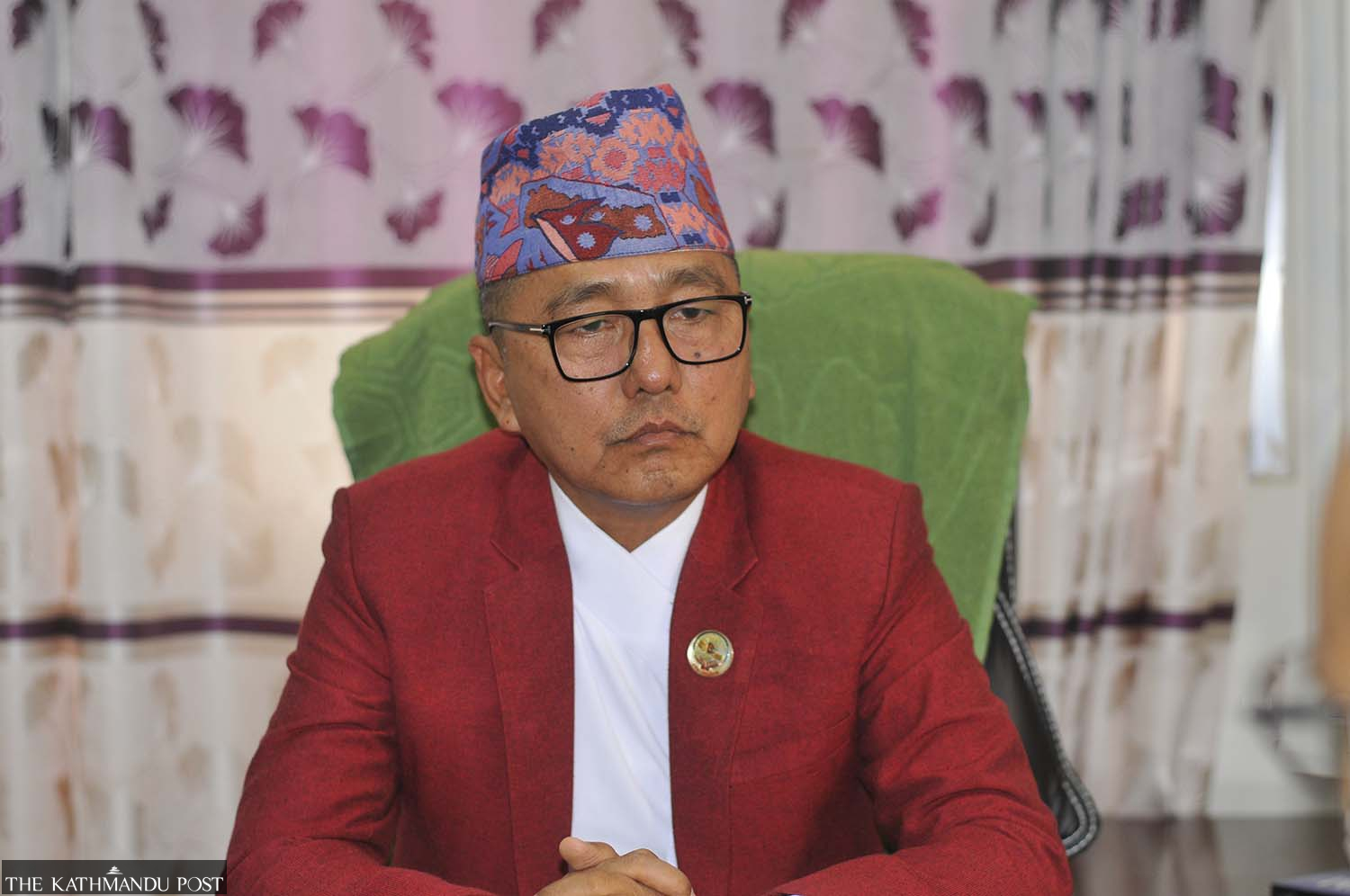
Your committee’s report has been criticised for lacking technical expertise, as its members, being MPS, are not subject-matter experts. How did you draw firm conclusions?
That criticism misses the point. We haven’t commented on technical specifications—we’ve only questioned how a project’s estimated cost escalated from Rs14 billion to Rs22 billion. We consulted senior pilots and individuals involved, and incorporated their inputs. A separate technical-level investigation is certainly warranted.
Could the increase in cost not be attributed to inflation over time?
The contract did not allow for cost escalation. The increase wasn’t due to inflation during construction—it was embedded in the tender process itself. The company had agreed to complete the project for Rs14 billion. So, why was it given Rs22 billion? No laws, including the Procurement Act, permit such an escalation, yet it happened. That is the core issue. You don’t need subject experts to understand this.
The former project chief called the report “a bundle of lies.” Why didn’t your committee conduct a technical audit under your supervision?
Once again, we didn’t need to measure or evaluate the construction technically. If that were the case, we would have required technical experts. However, we focused on procedural flaws and decision-making errors. Relevant individuals can defend themselves. Not everyone involved was necessarily corrupt. For instance, in the matter of tax exemption, a master list was prepared, and a policy decision was made, which the subsequent finance minister simply had to approve. Therefore, multiple finance ministers became involved in implementing decisions.
Some suggest that, as the Chair of the Rastriya Prajatantra Party, which advocates for Hindu statehood and abolition of federalism, you published the report at the time to give a boost to your agendas.
There’s no merit to such claims. Our party has its agenda, and I have consistently said that corruption is like feeding on one’s mother’s blood. I’ve even been targeted for this stance. But I don’t engage in political stunts. I practise principled politics.
As for the report, we held internal meetings over a year and discussed every aspect thoroughly. We even debated whether to name the individuals involved. Ultimately, we concluded that there had been wrongdoing in the tender process.
If there were such serious irregularities, why couldn’t your committee members agree on unanimous ownership of the report?
As the chairperson, it is inappropriate to disclose who said what during internal meetings. All members have signed the report. Those who held differing views also signed, albeit with a note of dissent. But there was no fundamental disagreement—we all agreed that there was corruption. Some members were out of Kathmandu and couldn’t sign immediately. Others signed after reviewing it in detail.




 18.12°C Kathmandu
18.12°C Kathmandu